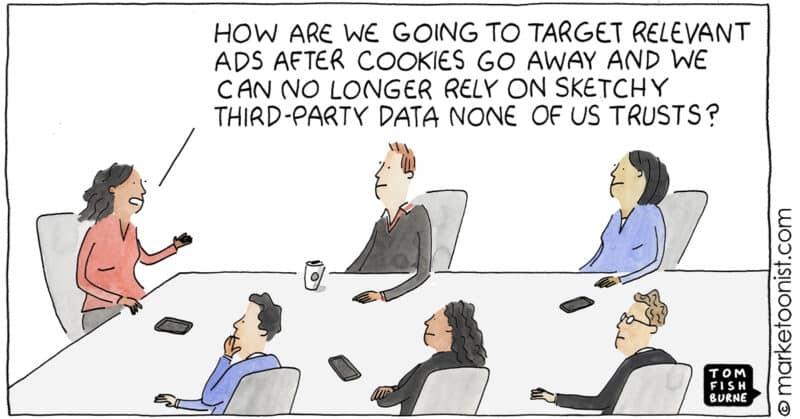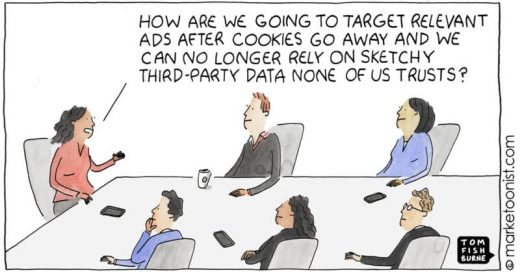When cookies go away: Marketoon of the Week
There’s bad third-party data out there, but also third-party data which does the job.

Who is going to really miss cookie-based third-party data?
Fishburne’s take: As marketers prepare for the end of third-party cookies, it’s good to remember how inaccurate much of that third-party data is.
A couple years ago, a group from MIT, GroupM, and Melbourne Business School studied the accuracy of third-party data that is regularly collected and sold by data brokers as the foundation of programmatic advertising. They looked at some of the most common data points in B2C advertising — including “Age” and “Gender” — and then checked the accuracy.
They found that “Gender” was only 50% accurate. It was the most accurate data point in the data set sold by these data brokers, and it was no more accurate than a coin toss. The accuracy of “Age” dropped to 25%. Forrester found that only 12% of B2B marketers have high confidence in the accuracy of the data they manage.
Why we care: Sure, there’s bad third-party data out there; tons of it. But a lot of it also does the job it’s supposed to do. Just think about how many ads you see for brands and products you’d previously searched for but didn’t offer first-party data to. Or here’s an experiment anyone can try: Browse incognito and find out just what the Internet looks like when you’re not recognized.
Yes, first-party data is better. But brands are in for a shock if they don’t realize how using first-party data exclusively will reduce their reach.
The post When cookies go away: Marketoon of the Week appeared first on MarTech.
(30)



